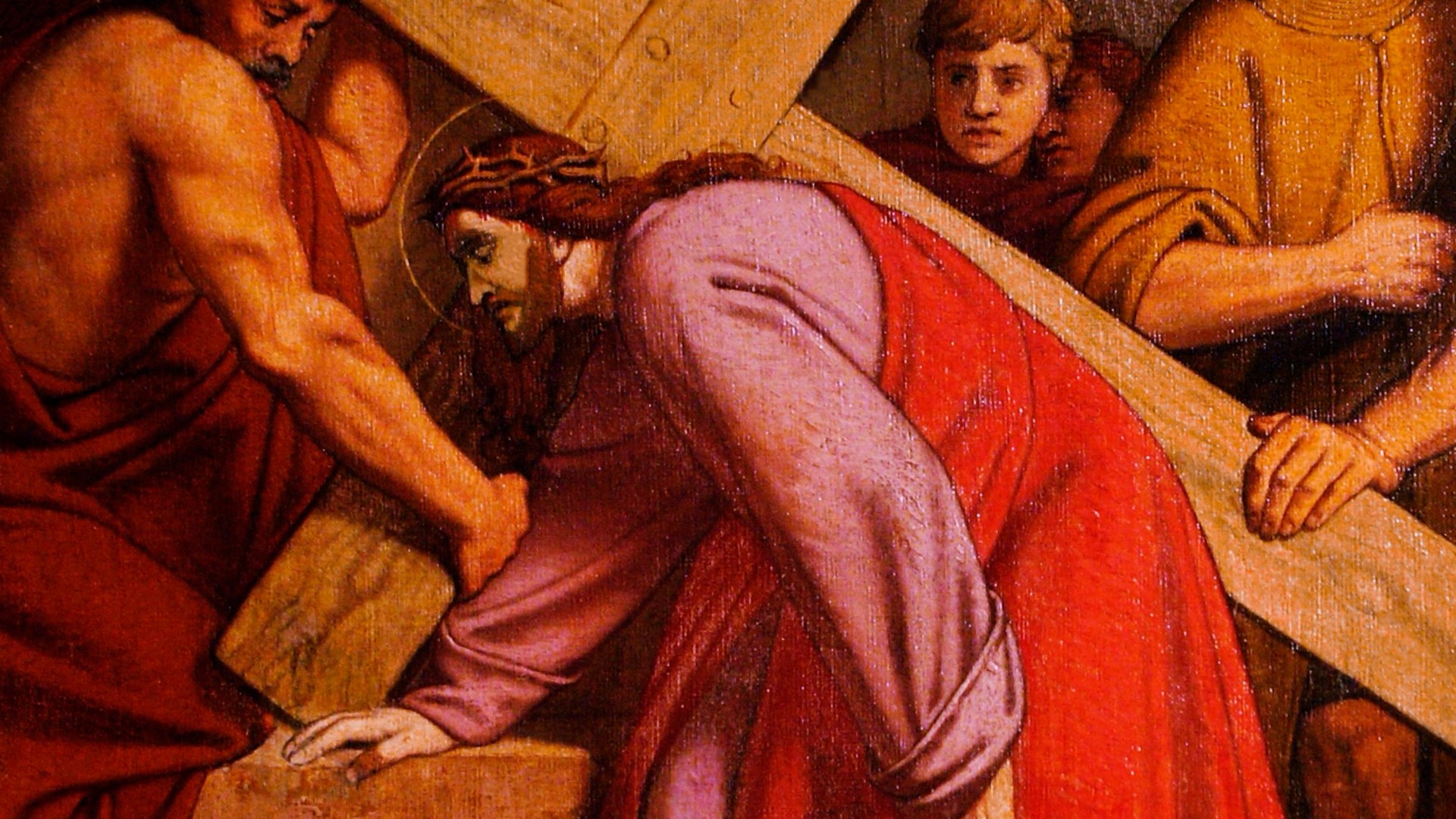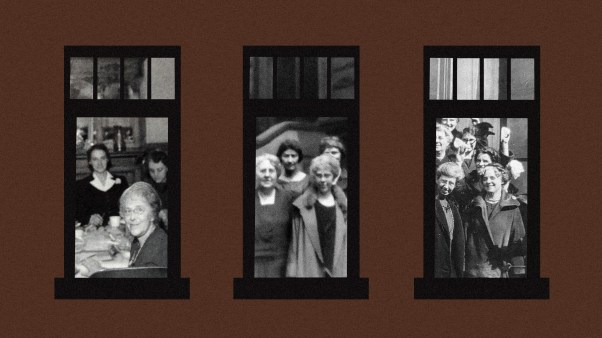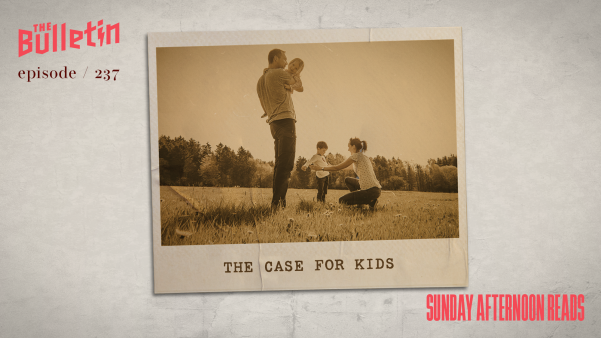As a child, my twin and I would often stage elaborate bake-offs during the school holidays. One year, I made an Easter cake with three chocolate crosses and a crown of thorns. I drowned these elements in large pools of jammy blood.
Sure, it was gratuitously gruesome—and I’m not surprised my sister’s saccharine fluffy chick cupcakes were the favored choice. But from an early age, I have shirked the propensity to avoid the grittiness of Easter. To me, its bloodiness is the very reason the Cross brings so much hope.
Many Christians around the world will celebrate Palm Sunday this weekend to commemorate Jesus’ triumphal entry into Jerusalem. Some 2,000 years ago, crowds of Jews laid out palm branches on public streets to welcome their “Messiah”—the conquering king who they believed would overthrow the Roman government and liberate them from its hostile occupation.
While many oppressed people today still desperately need this kind of physical deliverance, Jesus’ journey did not end there. Instead, his road to Jerusalem culminated in the Cross, which brought an entirely different kind of liberation.
Palm Sunday marks the start of Holy Week, the days leading up to Jesus’ betrayal, death, and resurrection. It is a period from the ancient church calendar when Christians look forward to the victory of Easter Sunday with joyful anticipation.
But it is also a time of great sorrow—marked by suffering, betrayal, and brokenness. And because of this, it speaks powerfully to those whose countries, relationships, or mental health situations are increasingly unstable. In a world desperately in need of hope, we cannot just brush past the anguish of Holy Week and move straight to the triumph of Easter.
The early days of Holy Week hint at the imminent doom.
Holy Monday (also known as Holy and Great Monday) marks the day Jesus cursed the fig tree for not producing fruit and then overturned the tables in the temple. On the next day, Holy Tuesday, Jesus continued teaching in Jerusalem, challenging the religious leaders, and informing the disciples of his impending crucifixion. The infuriation displayed by the teachers of the law sets the stage for the next few days of Jesus’ life.
Holy Wednesday (also known as Spy Wednesday) is an especially dark day, which refers to Judas Iscariot’s betrayal of Jesus. Judas’ duplicity would have been immensely painful for Jesus. He was not a detached observer on the periphery but one of Jesus’ core group of disciples—a close friend and traveling companion. This tragedy is deepened when Judas later regrets his decision to assist in Jesus’ death but is unable to reverse it, and so tragically chooses to end his own life.
Yet even in the darkest moments, there is hope. Jesus’ first words from the Cross were “Father, forgive them, for they do not know what they are doing” (Luke 23:34). Perhaps Jesus was assuring his friend (among others) that all was not lost—that no matter how deep our depravity, there is always the promise of transformation.
Some churches celebrate a Maundy Thursday meal together in a re-creation of Jesus’ last supper with his disciples. There, through their eating and drinking, Jesus informed his followers that his body would be broken and that his blood would be shed—for them and for many.
Later that evening, in the Garden of Gethsemane, as his death grew closer and many abandoned him, Jesus’ sweat apparently fell like drops of blood (Luke 22:44). Some speculate he may have been suffering from hematohidrosis, a rare medical condition where the capillaries around the sweat glands rupture under extreme distress and trauma.
Good Friday may seem an inappropriate name for a day marked by bloodshed, suffering, and death. But the ostensibly bad achieves the good—as Jesus’ broken body on the cross becomes the source of humanity’s redemption. C. S. Lewis wrote in Mere Christianity, “His death has washed out our sins, and … by dying He disabled death itself.” The cross, which was an instrument of death (and a slow, shameful, brutal one at that), ultimately becomes a symbol of life.
Yet in our attempt to rush from the horror of Good Friday to the joy of Easter Sunday, many of us neglect Holy Saturday, the final day of Holy Week.
Last Easter, I interviewed professor John Swinton, a former psychiatric nurse turned practical theologian, who said that Holy Saturday prevents us from developing a theology of glory—which glosses over the suffering of death and moves straight to the Resurrection. It reminds us that some people are living in dark spaces and that we need to sit with them in their despair, weeping with those who weep (Rom. 12:15).
Holy Saturday prompts us to take suffering seriously. It also assures us that we do not struggle alone. Throughout his life, Jesus suffered pain at every possible level: physical, psychological, and spiritual. While this by no means eliminates our own pain, the biblical picture shows us that whatever we encounter—whether physical sickness, mental health struggles, or spiritual doubt—Jesus has been there. He not only knows about the depths of human emotion, but he has also experienced them.
Many people know the shortest verse in the Bible: “Jesus wept” (John 11:35). However, most English translations of the original Greek do not do this passage justice. Elsewhere, in verses 33 and 38, the same Greek word for “weep” conveys a guttural depth of emotion—which can also be translated “He snorted like an angry horse.” Jesus was not just sorrowful about his friend Lazarus’ death; he was angry because he knew life was not meant to be like this, nor would it be forever.
When we are fragile, lost, and alone, a sugarcoated victory tale does not resonate with our pain. We need a concrete hope that has plumbed the depths of despair, sweat blood, and experienced excruciating death—yet also declares this is not the end of the story.
Friday is good because Easter Sunday is in sight. If Jesus indeed rose from the dead, then death does not have the final word. Holy Week and the events leading up to Jesus’ crucifixion assure us we are loved, we are not alone in our pain, and we are worth rescuing.
During the COVID-19 pandemic, I suffered a miscarriage—and in that time, Jesus’ nail-scarred hands and bloody body spoke more powerfully to me than ever. And when I later conceived and gave birth to another baby, we named her Eden-Grace to serve as a reminder that loss is not the end of our story. No matter how broken our lives are now, we need never lose the hope of God’s promised restoration.
In J. R. R Tolkien’s The Return of the King, the hobbit Samwise Gamgee asks Gandalf, “Is everything sad going to come untrue?” For us, the answer is yes. Jesus’ resurrection helps us make sense of the Cross, but it also provides a way out of our suffering. That is, it points to a future reality with no more pain when everything sad will come untrue.
Ruth Jackson is host of the Unapologetic podcast, is a producer and presenter for Premier Unbelievable, and cohosts The CS Lewis Podcast with professor Alister McGrath.













